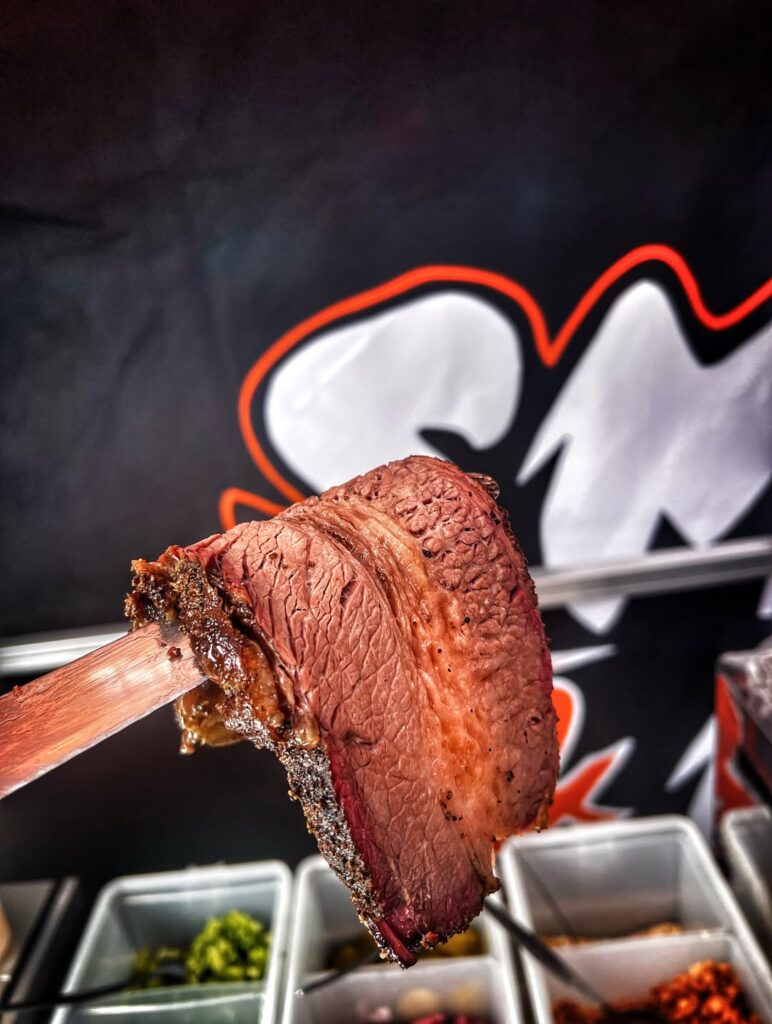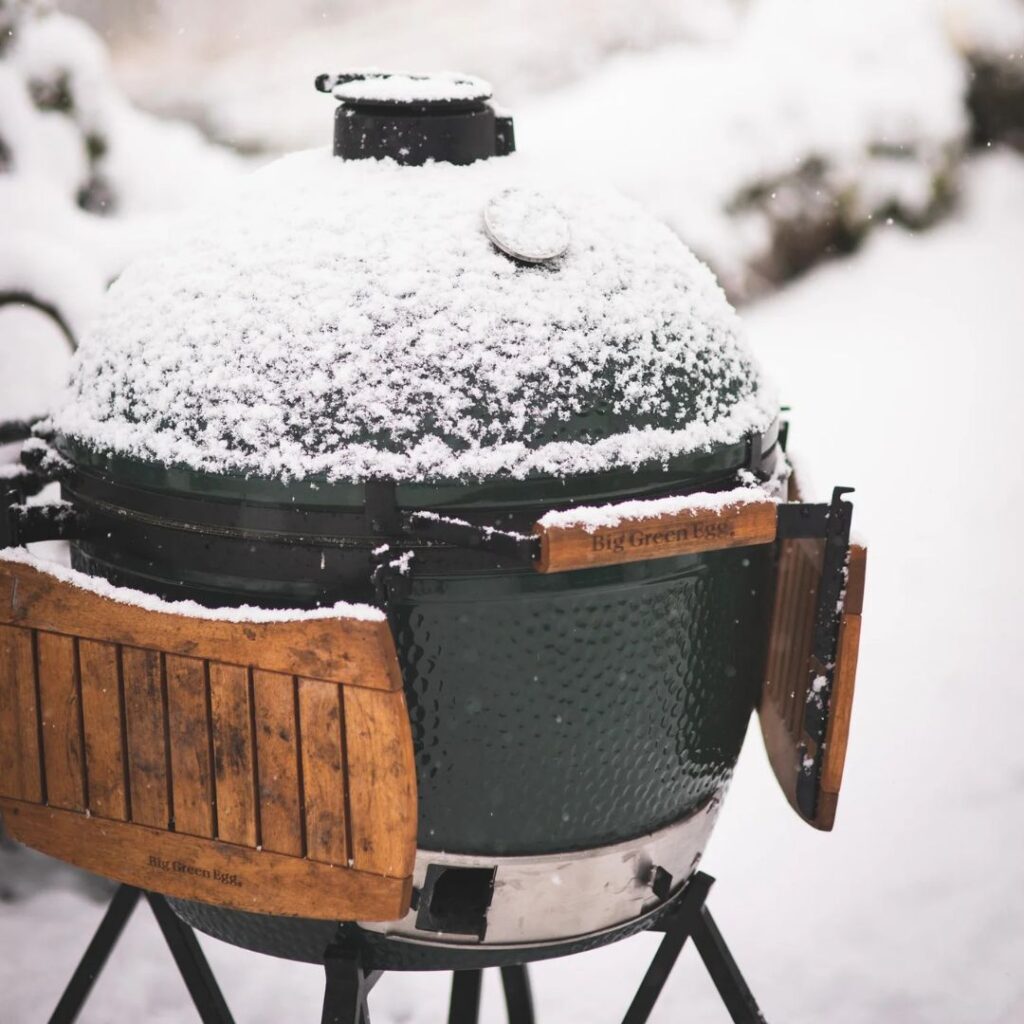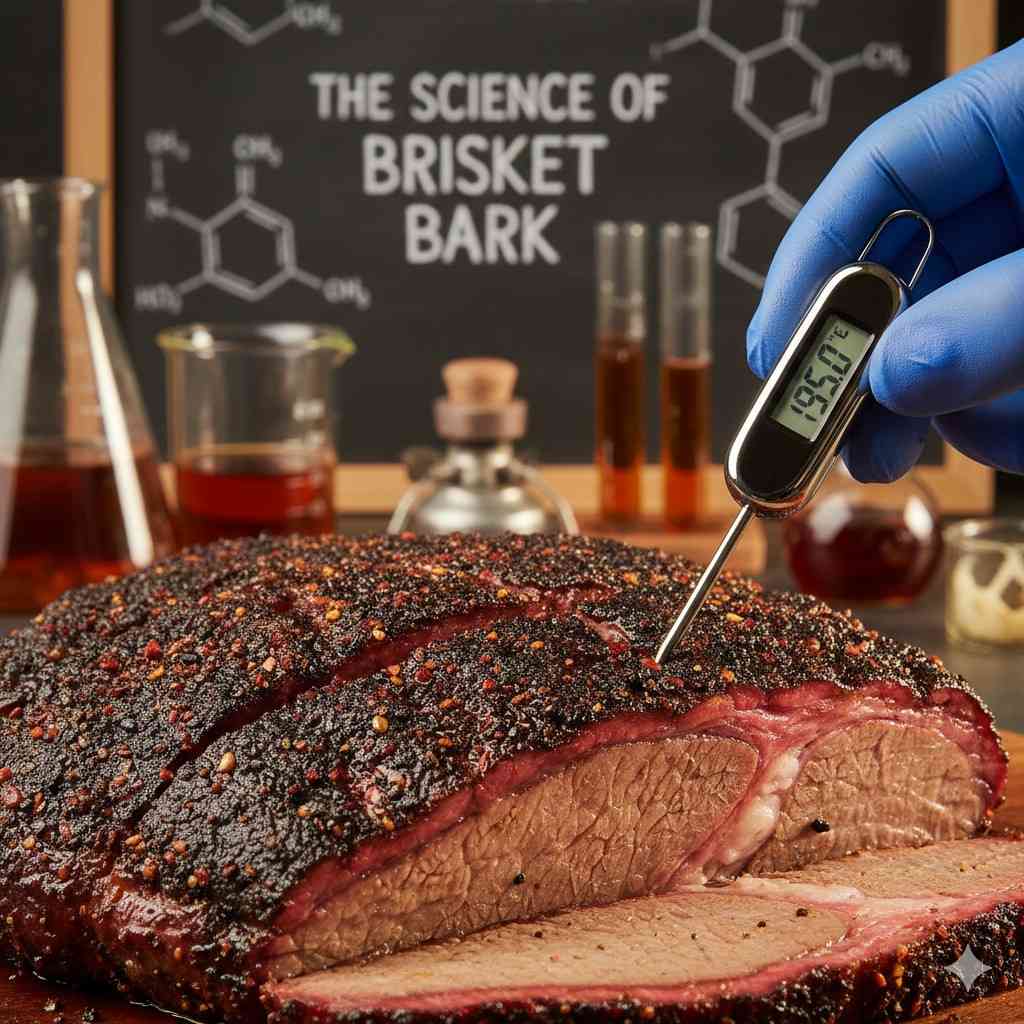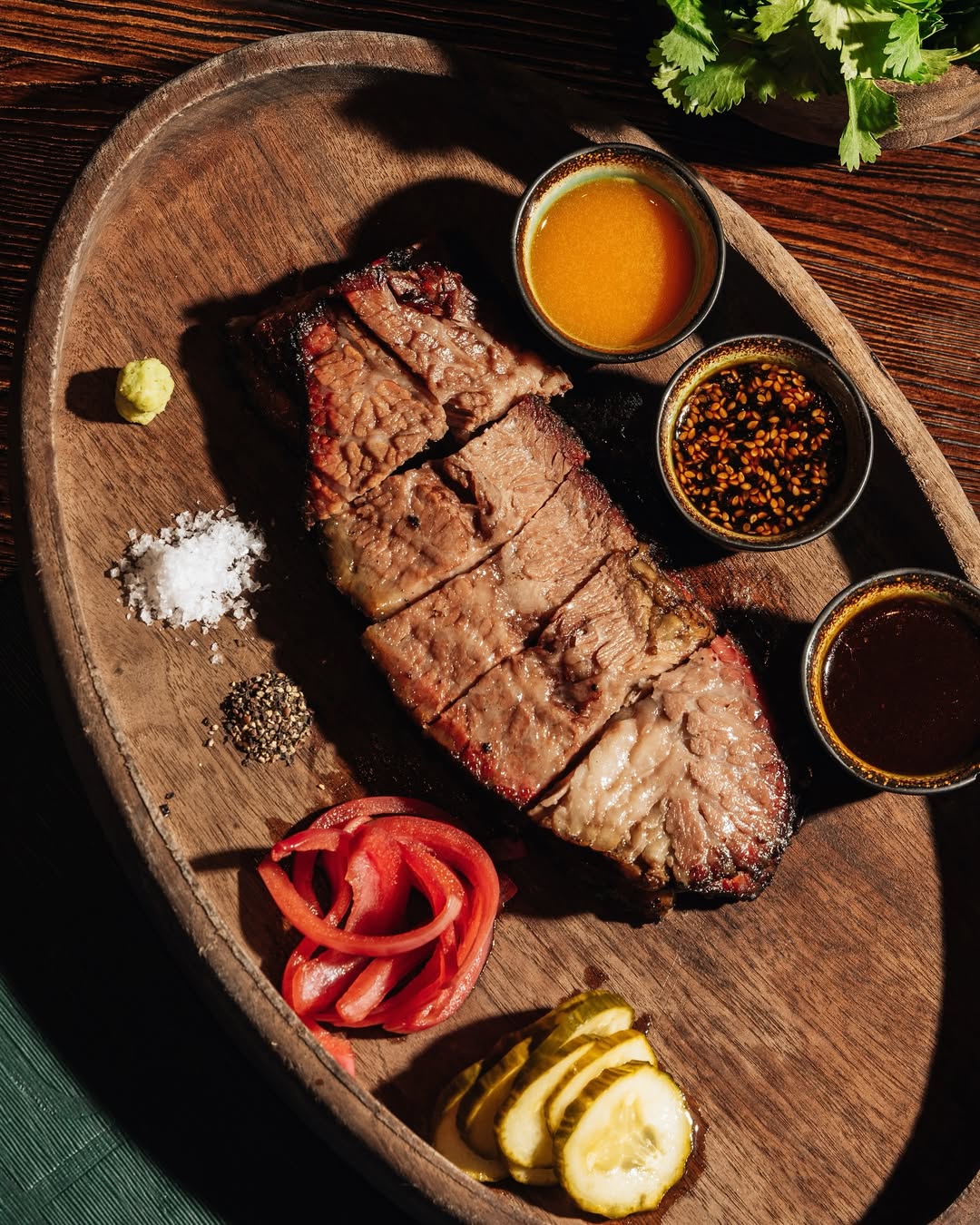If there’s one cut of meat that earns respect in BBQ circles, it’s beef brisket. This is the steak that separates rookies from pitmasters. It’s cheap to buy, but challenging to cook well.
Done right, it’s the kind of meat that makes people close their eyes and quietly nod in approval. Done wrong… well, let’s not go there.
In this guide, we’ll break down everything you need to know about beef brisket: from understanding the cuts, prepping the meat, cooking it low-and-slow, and serving it to your guests like a true pitmaster.
Whether you’re smoking, braising, or pressure-cooking, by the end of this article, you’ll understand brisket from cut to table.
What Is Beef Brisket?
Let’s start at the source. Beef brisket comes from the lower chest of the cow, just above the front legs. It’s a workhorse muscle, which is why it’s naturally tough – but also packed with flavor.
Brisket is generally divided into two main sections:
- Flat cut – Lean, uniform, easy to slice.
- Point cut – Fattier, more flavorful, perfect for burnt ends.
Because the brisket comes from a heavily worked muscle, it needs low-and-slow cooking to become tender. That’s why it dominates BBQ competitions and why home cooks sometimes panic when they see a raw 12-pound slab.
Fun fact: brisket isn’t just American BBQ. You’ll see it in Jewish delis (braised), Korean BBQ (thinly sliced), and Brazilian churrascos. Wherever it lands, it’s the meat everyone talks about.

Understanding Brisket Cuts
Understanding which cut to buy is half the battle.
Going into the details of beef brisket cuts is essential for perfect results. The flat cut is lean, uniform, and ideal for slicing, while the point cut is fattier and more flavorful, perfect for burnt ends.
The deckle or fat cap adds moisture and richness. Knowing which cut you have helps guide cooking method, seasoning, and portioning for juicy, tender brisket every time.
Flat Cut
- Leaner and more uniform in shape.
- Great for slicing and serving large groups.
- Cooks evenly but can dry out if overcooked.
Point Cut
- Fattier, more marbled.
- Perfect for burnt ends, chopped sandwiches, or flavor-packed tacos.
- Can handle longer cooking without drying out.
Deckle / Hard Fat Cap
- Layer of fat between flat and point.
- Some trim it down; some leave it for moisture and flavor.
- Pitmasters swear by leaving enough fat to baste the meat as it cooks.
Marbling Matters
- The more intramuscular fat, the juicier the brisket.
- USDA Choice or Prime grade gives the best results.
Buying Tips
- Look for a brisket that’s well-shaped and not overly thick at one end.
- Weight: 10–14 lbs is ideal for most smokers or ovens.

Brisket Preparation Basics
Before the fire even hits the meat, preparation is key.
Proper brisket preparation sets the stage for juicy, flavorful meat. Trim excess fat while leaving about ¼ inch for moisture, remove silver skin, and season generously with salt, pepper, or your favorite rub.
Optional marinades or injections enhance flavor and tenderness. Let the brisket reach room temperature before cooking – less handling, more patience, and your low-and-slow cook will reward you.
Trimming
- Trim excess fat, but leave about ¼ inch for moisture and flavor.
- Remove silver skin and hard, white fat layers.
Seasoning
- Keep it simple: salt and pepper is classic Texas-style.
- Optional: paprika, garlic powder, chili powder.
Marinades & Injections
- Some pitmasters inject brisket with beef broth, butter, or flavored liquids.
- Enhances moisture and flavor – especially for leaner flats.
Room Temperature Rest
- Let the brisket sit 30–60 mins before cooking.
- Cold meat into hot smoke = uneven cooking.
Pitmaster Tip: “Less handling = better bark. Don’t fuss with it every 30 minutes.”
Brisket Marinades and Flavor Boosters
Marinades and injections can elevate beef brisket beyond salt-and-pepper simplicity. Acidic components like vinegar, citrus, or wine help tenderize meat, while oils and spices carry flavor deep inside.
Consider garlic, paprika, chili, or coffee for boldness. For lean flats, injections of beef stock or butter keep moisture in the meat during low-and-slow cooking. Remember, less is more – over-marinating can mask the natural beef flavor.
Even simple rubs can be enhanced with a spritz of apple juice or cider vinegar during the cook. These flavor boosters turn your brisket from “good” to mouthwatering perfection, impressing friends, family, and even yourself.

Choosing the Right Smoker or Grill for Brisket
Your equipment choice can make or break your brisket. Charcoal smokers deliver rich, smoky flavor, while pellet smokers offer consistent heat with less fuss. Gas grills work too if you set up an indirect heat zone and add wood chips for smoke.
Consider size – your smoker must fit your brisket comfortably without crowding. Temperature control is crucial; low-and-slow is the mantra. And don’t forget airflow – steady smoke circulation ensures a perfect bark.
If you’re new, start with a smaller brisket on a reliable pellet smoker, then graduate to larger cuts and charcoal once you feel confident. Knowing your gear equals knowing your brisket.
Smokers for Brisket

1. Weber Smokey Mountain 22-Inch Charcoal Smoker
- Why: Classic, reliable, and perfect for low-and-slow smoking.
- Features: Tight temperature control, easy water pan setup, consistent smoke.
- Best For: Beginners to intermediate BBQ enthusiasts who want authentic smoked brisket flavor.

2. Traeger Pro 780 Pellet Smoker
- Why: Set-and-forget convenience with authentic wood smoke.
- Features: WiFIRE technology, temperature control up to 500°F, large cooking area.
- Best For: Home cooks and pros who want consistent low-and-slow results with minimal babysitting.

3. Oklahoma Joe’s Highland Reverse Flow Smoker
- Why: Competition-style smoker delivering deep smoke flavor and excellent heat distribution.
- Features: Reverse-flow design for even cooking, large capacity for brisket.
- Best For: Serious pitmasters who want a traditional competition-quality smoke profile.
Grills for Brisket

1. Weber Genesis II E-335 Gas Grill
- Why: Gas grill with ample space and indirect cooking capabilities.
- Features: Sear station, side burner, and consistent temperature control.
- Best For: Home cooks wanting smoky brisket without charcoal. Add wood chips in a smoker box for flavor.

2. Big Green Egg Large Ceramic Kamado Grill
- Why: Versatile grill for smoking, searing, and baking.
- Features: Ceramic construction retains heat and moisture; excellent airflow control.
- Best For: Brisket aficionados who want wood-fired flavor and precise temperature control.

3. Char-Broil Performance 4-Burner Gas Grill
- Why: Affordable, reliable, and suitable for indirect smoking setups.
- Features: Four burners, porcelain-coated grates, removable trays for smoking chips.
- Best For: Beginners seeking a practical grill for low-and-slow brisket cooking on a budget.
Cooking Techniques for Brisket
There’s no one right way, but there are right approaches.
Cooking beef brisket requires patience and the right method. Smoking develops deep flavor and a rich bark, while oven braising produces tender, juicy slices.
Pressure cooking saves time without sacrificing moisture, and grilling adds a quick char for extra flavor.
Choosing the right technique depends on your cut, available equipment, and desired taste, but all reward careful, low-and-slow cooking.
1. Smoking Brisket (Low-and-Slow BBQ)
Smoking is the gold standard.
- Equipment: Offset, pellet, or charcoal smoker.
- Wood selection: Hickory, oak, mesquite, or fruitwoods.
- Temperature: Keep 225–250°F for slow cooking.
- Method: Place brisket fat side up or down depending on heat source. Wrap halfway through in foil or butcher paper for moist, tender results.
Pitmaster Note: “Smoking is patience in action. The bark forms slowly, the fat renders, and your meat develops flavor layers you can’t cheat with sauce.”
2. Oven-Braised Brisket
If you don’t have a smoker, braising works beautifully.
- Preheat oven 275°F.
- Brown brisket on all sides in a heavy pan.
- Add liquid: beef stock, wine, or beer. Cover tightly.
- Cook 3–6 hours until fork-tender.
Tip: Low liquid and long cook = juicy brisket that slices beautifully for plates or sandwiches.
3. Instant Pot / Pressure Cooking Brisket
Time-crunched cooks can still impress.
- Sear brisket in the pot.
- Add aromatics: onion, garlic, stock.
- Pressure cook 75–90 minutes for a 10-pound brisket.
Bonus: Pressure cooking replicates braising in a fraction of the time, keeping meat tender.
4. Grilled Brisket
Direct heat is tricky; indirect is your friend.
- Preheat grill to 225–275°F for indirect zone.
- Place brisket over indirect heat.
- Optional: add wood chips for smoke.
- Sear briefly at the end for caramelized crust.
Key: Monitor internal temp, and resist the urge to cut early.

The Science of Brisket Bark
The bark is the crust that forms on smoked brisket and it’s where flavor lives. It develops from Maillard reactions between meat proteins and sugars, combined with smoke absorption.
Salt and spice rubs play a key role, drawing moisture to the surface and intensifying flavor. Wrapping the brisket too early or too late affects bark formation. Pitmasters swear by timing and patience – letting smoke do its work without interference.
The ideal bark is dark, slightly crunchy, and packed with flavor, complementing the tender meat underneath. A good bark signals a well-managed cook, and it’s often the part people fight over first at the dinner table.
Checking Doneness and Resting
Checking doneness is crucial for tender, juicy beef brisket. Aim for an internal temperature of 195–205°F, or use the “poke test” – meat should feel soft like butter.
After cooking, let the brisket rest 30–60 minutes under foil to redistribute juices. Slice against the grain to ensure every bite is tender and flavorful, maximizing both texture and taste.
Tests:
- Thermometer is safest.
- “Probe poke” test: insert fork; meat should feel like soft butter.
Resting: 30–60 mins under foil.
- Juices redistribute, making slicing easier.
- Slice against the grain for flat, tender pieces.
Resting and Carving Like a Pro
Many cooks skip this step, but resting brisket is critical. After cooking, wrap the brisket in foil or butcher paper and let it sit 30–60 minutes. This allows juices to redistribute, preventing dry slices.
Carving also matters: always slice against the grain, which shortens muscle fibers for maximum tenderness. Flats and points behave differently; know which way the grain runs. Resting isn’t just about moisture – it enhances flavor and texture.
Proper slicing makes your brisket look professional and ensures each bite is consistently tender. Even the best-cooked brisket will underperform if carved incorrectly.

Serving and Pairing Brisket
Brisket shines when paired right.
Serving beef brisket is all about balance. Pair tender slices with sides like coleslaw, pickles, baked beans, or roasted vegetables.
Choose sauces to match your style – vinegar-based for Texas, sweet tomato for Kansas City, or au jus for Jewish-style brisket. Burnt ends can be chopped for sandwiches, while flats are perfect for plates, making each serving flavorful and satisfying.
Sides:
- Coleslaw, pickles, baked beans, roasted vegetables.
- Jewish-style: matzo ball soup or potato kugel.
- Texas-style: potato salad, white bread, BBQ sauce on the side.
Sauces:
- Texas: vinegar-based.
- Kansas City: sweet tomato-based.
- Jewish-style: au jus.
Serving Tip: Burnt ends can go chopped into sandwiches, flats sliced for plates. Flexibility is part of the fun.
Creative Leftovers: Brisket Beyond the Plate
Don’t be surprised if you find leftovers of the mouth-watering briskets you’ve cooked based on this guide – it’s only natural when you’ve prepared a ton of beef for your guests. (laughs mischievously)
Because if you’re going to try and be economical, your briskets will disappear like Houdini’s tricks.
Leftover brisket can be as exciting as the original cook. Thin slices work for tacos, sandwiches, or sliders, while chopped point meat makes burnt-end style nachos or chili.
Add brisket to pasta, stir-fry, or fried rice for a smoky twist. Even soups and stews gain depth from a brisket infusion. Store cooked brisket properly in airtight containers or vacuum-seal to maintain flavor.
Creative use of leftovers ensures no bite goes to waste and extends your BBQ success beyond a single meal. Your brisket can star in multiple dishes, keeping the smoky magic alive long after the grill cools.
Brisket Myths & Common Mistakes
Brisket myths and mistakes can ruin an otherwise perfect cook. It’s not always tough – proper low-and-slow cooking makes it tender.
Avoid over-trimming fat, skipping the resting period, or slicing with the grain, which causes chewiness. Respect the meat, monitor temperature, and let patience work its magic, and even a novice can achieve juicy, flavorful beef brisket every time.
- Myth: “Brisket is always tough.” → Only if cooked wrong.
- Over-trimming fat: loses natural basting.
- Skipping rest: juices escape, meat dries.
- Slicing with the grain: tough, chewy pieces.
Pitmaster Advice: Respect the meat, respect the heat, and don’t rush.
Frequently Asked Questions
Q: Can I freeze brisket?
A: Yes, raw or cooked. Wrap tightly to prevent freezer burn.
Q: Flat vs point: which is better?
A: Flat = lean, neat slices. Point = fattier, more flavorful, perfect for burnt ends.
Q: How long can smoked brisket rest?
A: Up to 2 hours wrapped in foil, insulated in a cooler.
Q: Do I need a smoker?
A: No, oven braise or pressure cook works. Smoking just adds that signature bark and flavor.
Achieving the Perfect Sear or Smoke for the Brisket is a Work of Art
Mastering beef brisket isn’t about fancy tools – it’s about knowing your cuts, respecting the meat, and cooking it low-and-slow.
Whether you’re slicing a flat for plates, pulling point for burnt ends, or braising for a weeknight dinner, brisket rewards patience. Juicy, smoky, tender, and versatile, it’s a centerpiece, a conversation starter, and a true test of pitmaster skill.
Fire up the grill, preheat the oven, or grab your Instant Pot. Your brisket journey starts now. And yes, your friends will notice.
Featured image credit: @kyurestaurants

